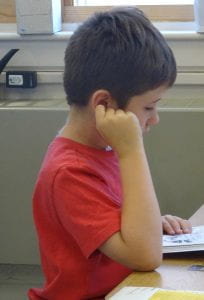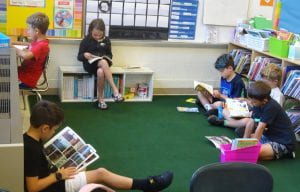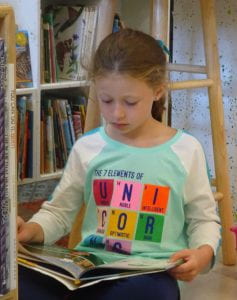 It has been a busy, full week. We are enjoying each other, the books we share and the opportunities we have for learning together. We’re deepening our understanding of our class rules and the school expectations. What does “acting responsibly” look like and sound like? How do our choices impact others? Does that matter? What is the right thing to do?
It has been a busy, full week. We are enjoying each other, the books we share and the opportunities we have for learning together. We’re deepening our understanding of our class rules and the school expectations. What does “acting responsibly” look like and sound like? How do our choices impact others? Does that matter? What is the right thing to do?
We’ve been exploring many of different math topics and projects. We’ve been collecting different types of words and learning about sentence types – while also reading, writing and solving problems each day.
Number Corner
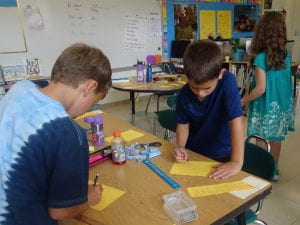 The focus of our calendar is 2-dimensional geometry. This week we learned about the three different types of angles. We made a set and labeled the angles we could find in a scavenger hunt around our classroom. Right angles were easiest to find in our classroom, acute angles were the second most common and obtuse were third and challenging to find. We learned that an angle has one end point and two rays. Later, using The Grouchy Ladybug, we explored the angles made by the hands of the clock as time changes. If you have an analogue clock at home, that might be a fun activity. I was surprised to realize that with hours and half hours there are only two right angles. I hadn’t thought about it before and now I wonder if there are other times when the clock hands are at a right angle.
The focus of our calendar is 2-dimensional geometry. This week we learned about the three different types of angles. We made a set and labeled the angles we could find in a scavenger hunt around our classroom. Right angles were easiest to find in our classroom, acute angles were the second most common and obtuse were third and challenging to find. We learned that an angle has one end point and two rays. Later, using The Grouchy Ladybug, we explored the angles made by the hands of the clock as time changes. If you have an analogue clock at home, that might be a fun activity. I was surprised to realize that with hours and half hours there are only two right angles. I hadn’t thought about it before and now I wonder if there are other times when the clock hands are at a right angle.
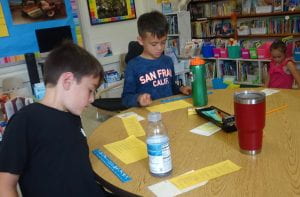 We’ve also begun learning about symmetry and congruence. We know that a shape is symmetrical when it can be cut in half so that both halves are mirror images. Through the wide variety of shapes on our calendar pattern we have learned that shapes with congruent sides and/or congruent angles are symmetrical. Some shapes have only one line of symmetry while others have many. We are also learning what congruence means. We know that a congruent shape is exactly equal in size and shape. When shapes are same in only one or the other (size or shape), they are similar but not congruent.
We’ve also begun learning about symmetry and congruence. We know that a shape is symmetrical when it can be cut in half so that both halves are mirror images. Through the wide variety of shapes on our calendar pattern we have learned that shapes with congruent sides and/or congruent angles are symmetrical. Some shapes have only one line of symmetry while others have many. We are also learning what congruence means. We know that a congruent shape is exactly equal in size and shape. When shapes are same in only one or the other (size or shape), they are similar but not congruent.
Math Problem Solving and Projects
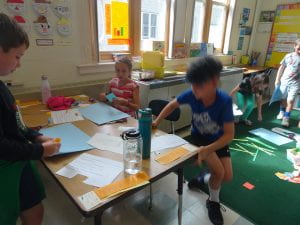 Most days our math workshop consists of Quick Images (ask you child to explain – I hope they can), a mini-lesson about a new topic, a quick warm-up activity or practice worksheet and problem solving. This week our mini-lesson and project work was centered on linear measurement. We focused on standard measurement for length and distance this week – inches, feet, yards and miles. We learned why a ruler is a foot long – and also why a foot is called a “ruler.” Ask your child about the story, How Big Is A Foot and the graph we created. It was a fun way to explore measuring in inches. We used rulers, yardstick and measuring tapes to measure common objects around the classroom. Some of the children made estimates and rounded to the closest inch, while others were careful to read to the closest quarter inch. We also read Inch by Inch and created collages in the
Most days our math workshop consists of Quick Images (ask you child to explain – I hope they can), a mini-lesson about a new topic, a quick warm-up activity or practice worksheet and problem solving. This week our mini-lesson and project work was centered on linear measurement. We focused on standard measurement for length and distance this week – inches, feet, yards and miles. We learned why a ruler is a foot long – and also why a foot is called a “ruler.” Ask your child about the story, How Big Is A Foot and the graph we created. It was a fun way to explore measuring in inches. We used rulers, yardstick and measuring tapes to measure common objects around the classroom. Some of the children made estimates and rounded to the closest inch, while others were careful to read to the closest quarter inch. We also read Inch by Inch and created collages in the 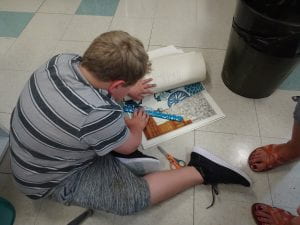 manner of the author-illustrator, Leo Lionni. Each collage has the same elements, but each student chose which item would be how many inches long or tall. Some have flowers that are 9 inches tall and other collages have 2-inch flowers. It was interesting to see children’s varying degrees of comfort with measuring and cutting and checking and revising. Some children were precise, others were okay with being close enough and still others got lost in creating and didn’t measure at all. “It was too hard to measure and do what I wanted.” Next week we’ll do some measurement activities with the metric system and learn about perimeter.
manner of the author-illustrator, Leo Lionni. Each collage has the same elements, but each student chose which item would be how many inches long or tall. Some have flowers that are 9 inches tall and other collages have 2-inch flowers. It was interesting to see children’s varying degrees of comfort with measuring and cutting and checking and revising. Some children were precise, others were okay with being close enough and still others got lost in creating and didn’t measure at all. “It was too hard to measure and do what I wanted.” Next week we’ll do some measurement activities with the metric system and learn about perimeter.
Word Collections
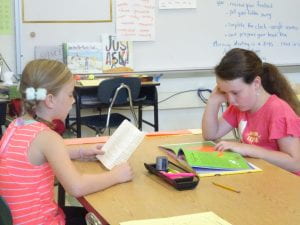 Our shared reading’s focus has been words. There are several really great books about collecting words and sharing them with the world. Each day we read one and used some aspect from the story to guide our word collections. One Monday and Tuesday we collected words that popped out at us while we were reading. We talked about syllables and looked for multisyllabic words on Wednesday. We learned about synonyms and listed a set for fabulous after reading The Boy Who Cried Fabulous. We read Punnidles(two photographs that show a punny riddle), learned about compound words. Later created our own original drawn versions. Bear + Feet = bare feet. Finally we learned about homophones with Dear Deerand began making our collection of those. Homophones add a real spelling challenge so we’ll try to keep our challenges straight.
Our shared reading’s focus has been words. There are several really great books about collecting words and sharing them with the world. Each day we read one and used some aspect from the story to guide our word collections. One Monday and Tuesday we collected words that popped out at us while we were reading. We talked about syllables and looked for multisyllabic words on Wednesday. We learned about synonyms and listed a set for fabulous after reading The Boy Who Cried Fabulous. We read Punnidles(two photographs that show a punny riddle), learned about compound words. Later created our own original drawn versions. Bear + Feet = bare feet. Finally we learned about homophones with Dear Deerand began making our collection of those. Homophones add a real spelling challenge so we’ll try to keep our challenges straight.
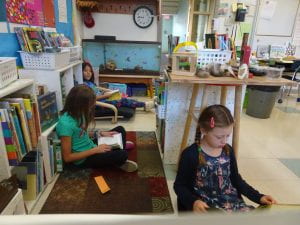 We spent some time reviewing the main parts of a sentence. Hopefully your child will be able to tell the four things all sentences have. We called the subject of the sentence both a noun and a “doer.” We labeled the predicate of the sentence as both a verb or what the “doer” is doing. We’ve practiced writing simple sentences and turning them into simple three to 5 sentence stories. We’ve also practiced writing simple sentences with a compound subjects or compound predicates. The more we can think about the parts of writing the more successfully we’ll be able to reflect on our writing choices as we are building our ideas and crafting our pieces of writing to publish and share.
We spent some time reviewing the main parts of a sentence. Hopefully your child will be able to tell the four things all sentences have. We called the subject of the sentence both a noun and a “doer.” We labeled the predicate of the sentence as both a verb or what the “doer” is doing. We’ve practiced writing simple sentences and turning them into simple three to 5 sentence stories. We’ve also practiced writing simple sentences with a compound subjects or compound predicates. The more we can think about the parts of writing the more successfully we’ll be able to reflect on our writing choices as we are building our ideas and crafting our pieces of writing to publish and share.
Bits and Pieces –
- Our field trip to Camp Lincoln is this coming Monday. We’ll be there for the larger part of the day. Please make sure your child has lunch – if they’ve ordered lunch from the school, we’ll be sure to have those with us – and snack. Extra clothes may be helpful, but are not essential. You know your child best. We are looking forward to this fun opportunity.
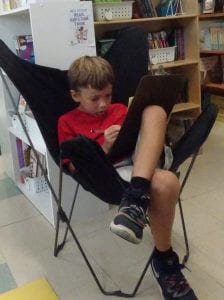 We’re enjoying School Days According to Humphrey. Humphrey is a classroom hamster. He’s in his second year in Room 26 and he can’t yet understand why he’s back, but his classmates from last year are not. At this point in the book he’s beginning to understand they are in other classrooms and that he has new students to help. Hmm…he’s got a lot to think about. You may want to ask your child about the characters and what s/he thinks may happen as the story unfolds.
We’re enjoying School Days According to Humphrey. Humphrey is a classroom hamster. He’s in his second year in Room 26 and he can’t yet understand why he’s back, but his classmates from last year are not. At this point in the book he’s beginning to understand they are in other classrooms and that he has new students to help. Hmm…he’s got a lot to think about. You may want to ask your child about the characters and what s/he thinks may happen as the story unfolds.- We’ve continued our conversation about Multiple Intelligence Theory. We read a biography about Paul Erdos called, The Boy Who Loved Maththis week. It was interesting to read about someone who was so extraordinarily strong in one way.
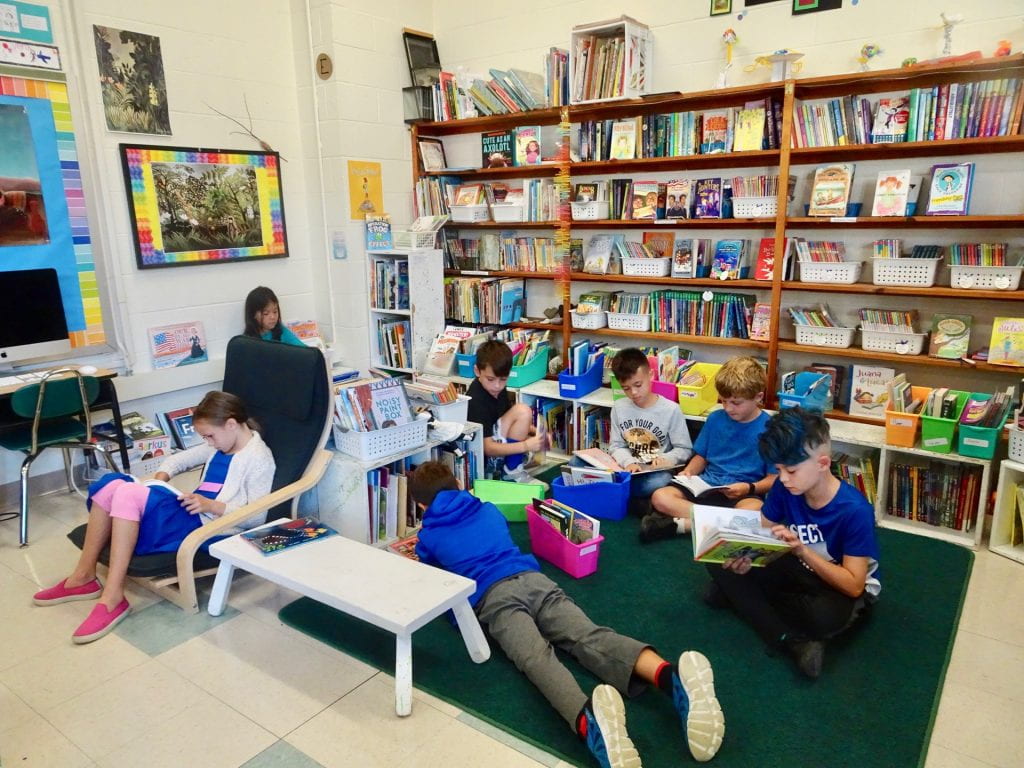
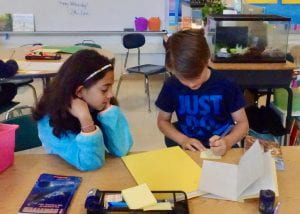 We’ve had a busy week. It began with Dot Day to celebrate working through difficulties and being kind to your self. We made our marks and now we are seeing where that takes us. (A line from the book.) On Tuesday we had picture day and then on Wednesday the children wrote letters to introduce you to some of their accomplishments so far. It was nice to meet so many of you again at curriculum night. We revised our classroom rules this week and had an assembly where we learned about school rules and expectations. Landon did a great job representing our class and presenting these new rules to the school. Thank you Landon.
We’ve had a busy week. It began with Dot Day to celebrate working through difficulties and being kind to your self. We made our marks and now we are seeing where that takes us. (A line from the book.) On Tuesday we had picture day and then on Wednesday the children wrote letters to introduce you to some of their accomplishments so far. It was nice to meet so many of you again at curriculum night. We revised our classroom rules this week and had an assembly where we learned about school rules and expectations. Landon did a great job representing our class and presenting these new rules to the school. Thank you Landon.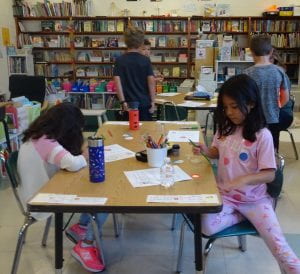 Over the last few weeks we’ve read a variety of biographies to see if we can discover the habits these famous people have that are leading them to success. We’ve read about athlete, Michael Jordan, artist, Henri Rousseau and farmer, Snowflake Bentley and scientists, Jane Goodall and Alan Rabinowitz. We discovered that no matter what their passions, they all had certain habits that helped them succeed. Here’s our list.
Over the last few weeks we’ve read a variety of biographies to see if we can discover the habits these famous people have that are leading them to success. We’ve read about athlete, Michael Jordan, artist, Henri Rousseau and farmer, Snowflake Bentley and scientists, Jane Goodall and Alan Rabinowitz. We discovered that no matter what their passions, they all had certain habits that helped them succeed. Here’s our list. We may add more to our list as we learn about other famous people next week, but for now we have a pretty good beginning. What will we learn from Margaret Hamilton, Wassily Kandinsky, Billie Jean King and Rachael Carson? How will we use what we learn to set goals for ourselves in third grade? We’ll see and share with you at our first student-led goal setting conference in late fall.
We may add more to our list as we learn about other famous people next week, but for now we have a pretty good beginning. What will we learn from Margaret Hamilton, Wassily Kandinsky, Billie Jean King and Rachael Carson? How will we use what we learn to set goals for ourselves in third grade? We’ll see and share with you at our first student-led goal setting conference in late fall.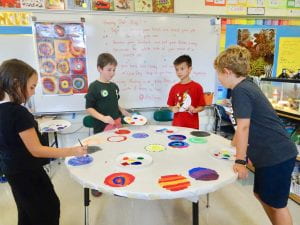 This week began to explore place value through expanded notation and base 10 riddles. The children are thinking about how groups of ones can become tens, groups of tens can become hundreds and groups of hundreds can become thousands. They have been learning about the power of ten.
This week began to explore place value through expanded notation and base 10 riddles. The children are thinking about how groups of ones can become tens, groups of tens can become hundreds and groups of hundreds can become thousands. They have been learning about the power of ten.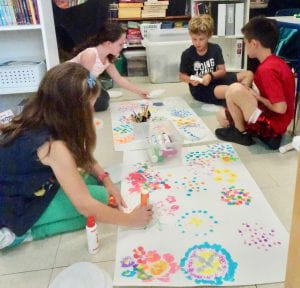 We finished reading
We finished reading 
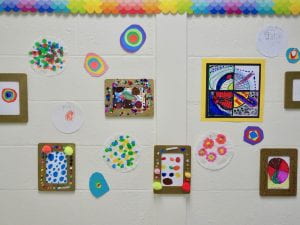
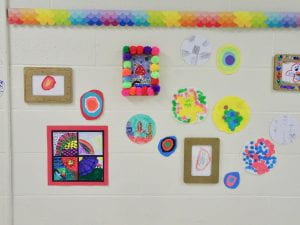

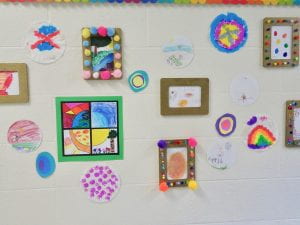

 We’ve successfully completed our first “sort-of” five-day school week, and it was a good one. We are settling into our routine. Some days have been smooth, focused and really productive. Some days have been a bit chatty and distracting, but we’ll work on that and improve. It feels as if we are developing a supportive community right from the start and that is great!
We’ve successfully completed our first “sort-of” five-day school week, and it was a good one. We are settling into our routine. Some days have been smooth, focused and really productive. Some days have been a bit chatty and distracting, but we’ll work on that and improve. It feels as if we are developing a supportive community right from the start and that is great!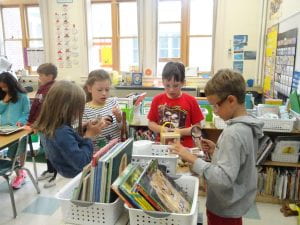 Many of our early discussions throughout these past three weeks have been about how we can help each other do the best that we can and succeed in achieving our goals. After much discussion, we decided that these would be our classroom rules. We agreed that these should be the guidelines we are attempting to meet and follow.
Many of our early discussions throughout these past three weeks have been about how we can help each other do the best that we can and succeed in achieving our goals. After much discussion, we decided that these would be our classroom rules. We agreed that these should be the guidelines we are attempting to meet and follow.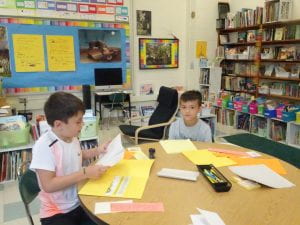 As we further define the expectations for each part of our day, we are hopeful that we will become better able to follow our guidelines more of the time. You may want to ask your child what if there is one behavior change he or she could make that would help our class be more successful in following our rules more of the time. For some of the children there will be many, but for others there will be very little. It’s just good to ask. It helps them realize their choices in the classroom and halls, in UA classes, on the playground, washing hands before lunch and in the lunchroom matter.
As we further define the expectations for each part of our day, we are hopeful that we will become better able to follow our guidelines more of the time. You may want to ask your child what if there is one behavior change he or she could make that would help our class be more successful in following our rules more of the time. For some of the children there will be many, but for others there will be very little. It’s just good to ask. It helps them realize their choices in the classroom and halls, in UA classes, on the playground, washing hands before lunch and in the lunchroom matter. Math each day starts with a warm up to get us thinking about number and amount. This week we’ve continued to review strategies for subtraction. The children are selecting three equations to solve from a grid of 12 and then they are asked to solve story problems.
Math each day starts with a warm up to get us thinking about number and amount. This week we’ve continued to review strategies for subtraction. The children are selecting three equations to solve from a grid of 12 and then they are asked to solve story problems. Just like last week, if you talk to your child about the that comes home each week, don’t be alarmed by mistakes. My comments on the problems at this point may not even help your child know if he or she has been accurate or not. I hope the comments make them think. (The children are asked to look through their work folders every morning. They aren’t reading the feedback yet.) At this point in the year, I am learning about them and their problem-solving approaches. I am coming to understand who has strong number concept and recognizes the relationships between amounts. The end goal is solving multi-step problems with accuracy and efficiency. That takes time to develop, but we’ll do it.
Just like last week, if you talk to your child about the that comes home each week, don’t be alarmed by mistakes. My comments on the problems at this point may not even help your child know if he or she has been accurate or not. I hope the comments make them think. (The children are asked to look through their work folders every morning. They aren’t reading the feedback yet.) At this point in the year, I am learning about them and their problem-solving approaches. I am coming to understand who has strong number concept and recognizes the relationships between amounts. The end goal is solving multi-step problems with accuracy and efficiency. That takes time to develop, but we’ll do it.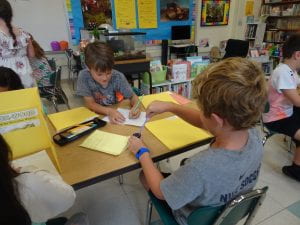 We’ve been reading about
We’ve been reading about  We are
We are  We’ve been exploring
We’ve been exploring  We’ve completed our second week and our first Friday. I hope your children feel as though we are settling into a routine. The class developed its daily jobs list. We started using it on Wednesday and it has been exciting to feed the animals and work together to get things done.
We’ve completed our second week and our first Friday. I hope your children feel as though we are settling into a routine. The class developed its daily jobs list. We started using it on Wednesday and it has been exciting to feed the animals and work together to get things done.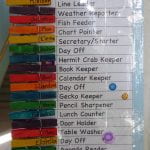 This week our focus was on what are our rights and responsibilities as members of a community. We spent time defining community – a group of people that come together to do something – and a right – something you need and should have – and responsibilities – actions we need to take to make sure members of our community can have their rights met. We’ve read several books like Swimmy, Miss Nelson is Missing and The Great Fuzz Frenzy to help us understand how communities work together and what can happen when they fall apart. We read about rights in I Have the Right to Be a Child and we’ve begun to consider how many different communities we are a part of.
This week our focus was on what are our rights and responsibilities as members of a community. We spent time defining community – a group of people that come together to do something – and a right – something you need and should have – and responsibilities – actions we need to take to make sure members of our community can have their rights met. We’ve read several books like Swimmy, Miss Nelson is Missing and The Great Fuzz Frenzy to help us understand how communities work together and what can happen when they fall apart. We read about rights in I Have the Right to Be a Child and we’ve begun to consider how many different communities we are a part of.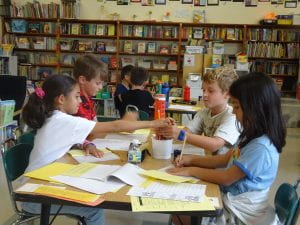 You’ll notice that several papers in the back of your child’s folder where s/he was thinking about what habits and behaviors would help us become a more successful learning community. Most of the children are hoping for a calm, focused, helpful learning community. And it is certainly true; the children are able to do their best work in that environment. It can be hard to maintain. We are beginning to see the importance of reflecting and thinking carefully about what we are doing. We are trying to consider how our choices impact one another. We are using theses ideas and discussions to develop our classroom rules and guidelines that will remind us to make better choices.
You’ll notice that several papers in the back of your child’s folder where s/he was thinking about what habits and behaviors would help us become a more successful learning community. Most of the children are hoping for a calm, focused, helpful learning community. And it is certainly true; the children are able to do their best work in that environment. It can be hard to maintain. We are beginning to see the importance of reflecting and thinking carefully about what we are doing. We are trying to consider how our choices impact one another. We are using theses ideas and discussions to develop our classroom rules and guidelines that will remind us to make better choices. This week in math we’ve reviewed different strategies for knowing and thinking about addition facts. There are 100 altogether, but when we break them down to think about the different strategies we can use to find the sum quickly it’s not so bad. We’ve learned a couple of games that help practice these facts – Roll Two Dice (a probability game) and Card Combinations for adding and Subtracting.
This week in math we’ve reviewed different strategies for knowing and thinking about addition facts. There are 100 altogether, but when we break them down to think about the different strategies we can use to find the sum quickly it’s not so bad. We’ve learned a couple of games that help practice these facts – Roll Two Dice (a probability game) and Card Combinations for adding and Subtracting.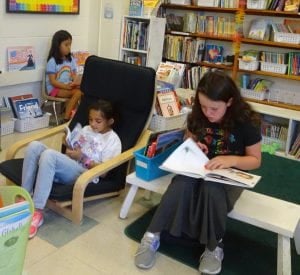 We’ve also begun exploring polygons. We read Tangled: A Story About Shapes, Friendshapes and The Greedy Triangle to remind us of how many different shapes there actually are. We’re learning about different categories of 2-dimensional shapes and how they are sorted. We’re learning about congruence, lines of symmetry and angles. We’re having fun with this as we build our calendar each day and learn more.
We’ve also begun exploring polygons. We read Tangled: A Story About Shapes, Friendshapes and The Greedy Triangle to remind us of how many different shapes there actually are. We’re learning about different categories of 2-dimensional shapes and how they are sorted. We’re learning about congruence, lines of symmetry and angles. We’re having fun with this as we build our calendar each day and learn more.